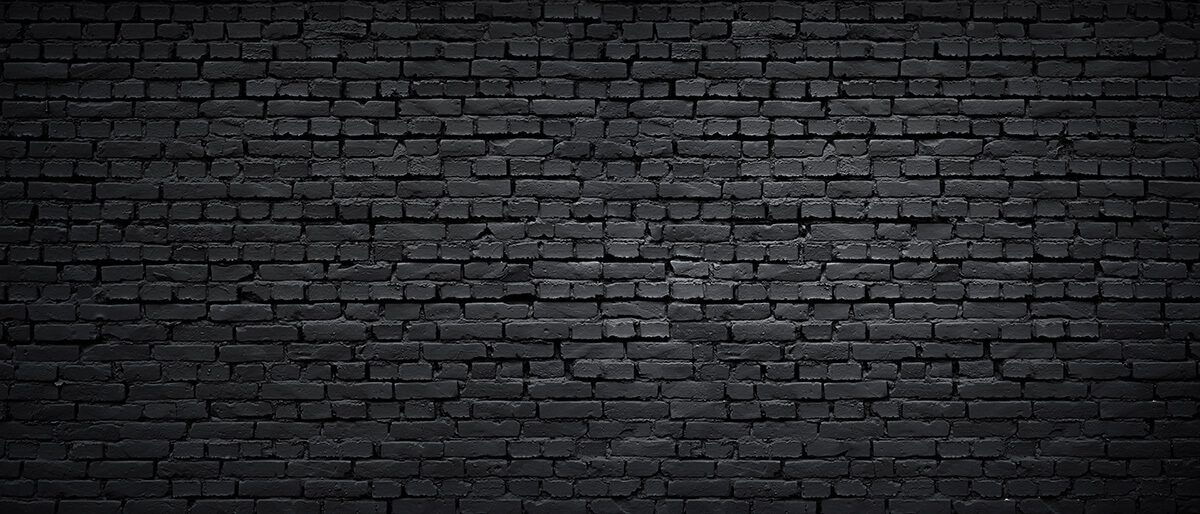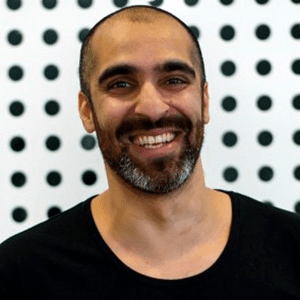

#35: Predator or prey, how will you emerge from the current disruption?
Disruption is a powerful way of thinking about innovation-driven growth. Matthew Tice, CEO at Insurgence, will challenge your thinking and discuss ways to transform disruption into a source of permanent competitive advantage.
A worst-case scenario plan will help you visualise different strategic approaches and navigate through uncertainty. Will you emerge from current disruption as a Predator or Prey?
Stephanie: Hello and welcome to TEC Live. Stephanie Christopher here, Chief Executive of The Executive Connection. TEC connects CEOs, executives, and business owners to the world’s largest business leader network.
Leah: There’s something about spring. I don’t know what it is, but there’s something about spring that makes you want to get new ideas, discuss new ideas, so it’s exciting to have Stephanie back in the studio for TEC Live, and discuss some ideas.
Stephanie: Thanks, Leah. It’s great to be back in the studio and great to be in spring, absolutely. Our guest today on TEC Live is Matt Tice. Matt is an expert on business strategy, a real focus on disruption and what it is that can really help businesses succeed in whatever context they find themselves in. Matt is a published author, he is a speaker to small and large groups of business owners on exactly this topic, and you are very welcome at TEC Live. Matt Tice, welcome this morning.
Matt: Thanks for having me, on such a beautiful spring morning.
Stephanie: It is a beautiful spring morning. So Matt, when we first talked about this topic, you said something that was really interesting to me. You said that COVID is just like any other disruption. What’s the big difference for COVID then, for businesses?
Matt: I put a lot of thought into this. The disruption comes in lots of different ways, and here we are now with a broad based disruption that affects almost every business, government, not-for-profit. Everybody really. I’m sure you could see even in your home life, you can feel how this disruption is washing like waves through everything that we do. But it is fundamentally just disruption, and the playbook, if you will, or the way we need to think about how to get through it is probably not that different than many other types of disruption.
Stephanie: And disruption isn’t always a bad thing, so there are a number of businesses that this has been a really positive time for, as well, aren’t there?
Matt: Well, I like to say there’s never been a more exciting time to be in business, really. If you think about-
Stephanie: You keep saying that. If you like saying it, that’s good.
Matt: I do. I say it over and over again. It’s one of those times where we had the GFC which was our test case, and now here we are with COVID, and I think that business owners and CEOs and any interested stakeholder can look back at this time and say, ‘What have I done that’s really capitalised on the opportunity that’s in front of us?’ Whilst I don’t want to downplay any of the suffering that’s going on, where certainly some businesses and individuals in different parts of the world, and in Australia too, are doing it tough. But I think we can find tremendous amount of opportunity here.
Stephanie: Yeah. It’s something, and we will get to that. Another thing that I’ve really reflected on, this isn’t linear, is it? Because when we were first talking, I think it was kind of April/May, when you and I first were discussing this particular disruption. There was an idea about build back better. ‘Okay, well this has happened, we’ve made it. We’ve moved on. Now it’s time for businesses to build back better.’ This has just changed so much since then, and it’s clear that it’s certainly a long haul game here. What impact has that had on your thinking about this?
Matt: Well, I don’t really differentiate too much the time frame, because we’ve gone through phases really. The initial shock phase has largely worn off, and I think that at least my mindset has been we have to plan for the worst, but really we also have to operate in the moment, too, which is find that dichotomy is really important. But it is going to be a long haul. I don’t think it’ll be back to normal, whatever normal looks like when we come out of the other end of this, until probably 2023-2024.
But the world is different now. A lot of the things that we saw on the horizon are much closer to us, and as a consequence of that, for my perspective it’s a disruption that will create and destroy many new industries and many new opportunities, which I think will be quite exciting in profound ways.
Stephanie: Yeah, great. Okay. When you talk about things on the horizon being much closer, well technology is clearly one of those. The shift that businesses and individuals have made so quickly in a matter of a couple of weeks is really significant. What other things do you think?
Matt: Well, one of the things that I think is really fascinating, I’ve been speaking a lot about this, is if you mix the geopolitical situation with the macroeconomics with the microeconomics, and kind of look at long term trends about nationalisation and if you will, the sovereign power of nations, it’s kind of pushing us back into what I would describe as a more of a trend towards localisation, and probably we’ll see more repatriation of business manufacturing, for example, back into Australia and into other economies.
Because we’ve had to operate this way, which I think brings some interesting opportunities, but when you mix that up with technology and you mix that up with now people spending time with their families, there’s a lot of fascinating subtle trends that were coming, that are going to affect our lives really in important ways.
Stephanie: Yeah. It’s interesting, that nationalism idea, and the kind of localism. I remember Warren Hogan, over 12 months ago, talking about that as a theme, when he was talking about the economy. But that’s just absolutely amplified with even conversations about borders anyway. That’s really become something significant for businesses to deal with, hasn’t it?
Matt: Right, and if you look at what’s happened in technology, I’m fascinated also with health and education, how quickly … We all knew that telehealth was on the horizon, it was a big part of, for example, the NBN business case was to make health available to the rural communities, but somehow on one hand the government was supporting it, on the other hand not, but literally over 60 days, the telehealth is now right here in front of us. It’s a real thing and people interacting with that community in a very different way.
Similarly with education, I couldn’t even imagine my kids being able to operate online in … It was a funny story. My son goes to an art school, which is … There’s not a techy amongst any of those people and they turned the whole thing around in a single day, from full classroom experience to largely a virtual experience overnight.
Stephanie: That’s amazing.
Matt: Just I’m fascinated. When we want to get things done, we can do it.
Stephanie: So part of it was perhaps we’d been preparing for this for a long time. Maybe our mindset had shifted further than we thought it was, but what was such a big learning for us all, wasn’t it, as business leaders, how quickly we can do something if we actually need to?
Matt: That’s true. The thing with these trends is they’re always on the horizon until they’re not, right? They’re out there, they’re out there, they’re out there, and then they’re on your doorstep and you have to operate, right?
Stephanie: Yeah.
Matt: That’s how I’ve been fascinated watching leaders who’ve had to pivot and had to make decisions at a speed that perhaps in their whole career, they’ve never been pushed to get the noise out of the way and focus on the fundamental decision to be made. I know there’s a lot of lessons to take out of that, watching how human beings can adapt when they need to.
Stephanie: Yeah, okay. Absolutely. In that context, there’s two ways that business leaders can go here. This is where you showed two slides. The cute little deer in the headlights, and the most beautiful slide, and then the horrible wolf eating the cute little deer that’s not in the headlights anymore. Tell us about the deer and the wolf. How would a deer operate now?
Matt: Well, I think the instinct when there’s disruption is to pull back and be more internally focused, and really there’s a pretty predictable pattern of behaviour which when disruption comes, especially a big disruption like COVID, really first to pull back and rip costs out of the cost structure. But at the same time, try to initiate demand, which those two things sound compatible, but really in some ways they’re not because as you’re rushing to find new ways to generate demand, as demand’s dropping, and you’re pulling out costs, that creates a situation where customers, employees, and other stakeholders start to suffer, which makes it worse.
In the meantime, what you tend to be doing is pulling back investments in capability that would be fueling your future, which then create a situation where now you’ve made yourself less competitive in the short term, you’ve mortgaged your future in terms of being more competitive in the middle term, and then I guess what typically happens is that we tend to ride our existing business model into the ground. Because we generally are very inflexible about the core model that’s created value for us over a long period of time.
Stephanie: Because you’re assuming that the core is the only thing that will save you now, because if I do a really good job on the core, we’ll survive whatever the disruption is.
Matt: That’s right. Because most models are built for largely stable environments, we tend not to change them very often. And therefore we don’t challenge the assumptions that underpin those, and then when things come and they start to rapidly accelerate, we’re unprepared for that. I guess if I could just add is the way we’re programmed as leaders is to plan in one direction, which is up.
Stephanie: Growth.
Matt: Which is growth. We want more, more, more, and largely that’s a function of sweating our existing model to do more things. Whether that be geographically or finding customer segments, et cetera.
Stephanie: A lot of businesses operate that way.
Matt: Yeah. It’s a perfectly logical way to operate in a period of largely stable environmental contexts.
Stephanie: I’ve been in a lot of businesses that that’s exactly the model when there’s a disruption, just go straight to the cost. Cut the costs, but don’t cut the expectations or the targets or whatever, with the same business model. What’s the alternative?
Matt: Well, as you point out, the wolf and the deer. I guess the lesson that we try to get across is that first you have to be in an opportunity mindset in this environment. You’ve got to be on the front foot, hence the wolf, the predator. The deer in the headlights was the other side of the analogy, so don’t be on the back foot. But there are subtle changes to that basic model that I just described that can help you significantly think differently about the environment.
First is what we tend to do when things are really stable is we trade economic benefit for flexibility. Rather than thinking about how to take costs out, we talk about variabilisation, for example. How do we increase flexibility, which allows us to bend like a reed, for example, as the winds of change come through, and that way we can preserve or breakeven. That’s really about sharing risk around, and also finding ways to fundamentally change the cost structure to be more flexible. In other words, optimise for flexibility rather than a few extra basis points of margin.
Stephanie: So when you say optimise for flexibility, are you talking just about the team?
Matt: Well, I’m talking about the operating model, really, so that-
Stephanie: Okay. Tell us more about that. Go into that a little bit more.
Matt: Well, I guess what kills you in times of disruption, when demands drops precipitously, and fundamentally you run below your breakeven and you run out of cash, that’s obviously not a great place to be. But if you can have a flexible architecture for your operating model that allows you to variablise a lot of the costs, then as demand changes, you’re not as sensitive to those shifts. And it also gives you the opportunity of when demand increases to pile on more resources, and paradoxically sometimes those resources may come from the outside and bring new thinking into the business, which then gives you new opportunities to create value.
Whereas when we’re shrinking and we’re just worrying about taking OPEX out of the business, we can’t shrink the glory, basically. Therefore we don’t get any new blood, we don’t get any new insights.
Stephanie: So fixed versus variable costs is really important?
Matt: I think it is, yeah.
Stephanie: One of the things, I know we’ve spoken about before, is a lease or where you actually physically work as an organisation.
Matt: I’ve been fascinated by … It was maybe two or three months ago that I heard the first case of a company that started going through their fixed cost lines. For example, corporate headquarters coming up on the line. Asking a fundamental question, ‘Do we need a corporate headquarters?’ Now I’ve heard more and more stories about this, and have initiated many of these conversations with clients, and one of our favorites is a company that I was working with in the US, a large food company who they were looking at their headquarters line and everyone was thinking, ‘The boss is never going to give up their office’ and having this conversation.
A brilliant comment from the sales guy came up which was, ‘There’s only one question we really need to answer. After we’ve gotten through will the finance, the admin, the legal people all be able to perfect virtually? Is does a customer ever show up to the headquarters?’ And in this case, the answer was no, and it was fascinating. The CEO, without even skipping a beat, drew a line through the head office. It had been there for 50 years, and no more head office. And why would we have anything that doesn’t serve the customer? I love it.
Stephanie: Because six, I don’t know how many months we are now, eight months ago that would have been such a bold move.
Matt: Indeed.
Stephanie: And transformational change and tiers, that would have been a really bold move, whereas that seems like such a simple thing now. With my leadership team a week ago, we had the conversation what if there was no lease? Just forget about whether there is or not, what if there was no lease? I loved someone saying, ‘Well, you couldn’t have 20 different hubs.’ I said, ‘Well, we do already.’ Because there’s people working in 20 different places right now.
Matt: Right. It’s a fascinating thing. Even pre-COVID, we always talk about one of the big complaints about getting things done or executing your strategy is that we’re resource constrained. I never accept that. I don’t think we’re ever really resource constrained.
Stephanie: Tell me more about that.
Matt: Well, you come to your point. You can leverage, for example in your case, you can leverage your community for hubs. In fact, we’re sitting in that right now. You don’t need to carry that fixed cost, because you can engage with your stakeholders to find ways to share cost and risk. You can work with your customers, you can work with your suppliers, your consultants, your advisors, whatever, and there is an almost unlimited amount of resources if you’re clever enough to tap into them.
Stephanie: That’s really interesting. Okay, so variablise your cost structures. What else?
Matt: Look, I’m really all about the customer. I think there’s never going to be a better time to fundamentally reshape or rethink at least how you engage with your customers, and how … Not just how you sell to them, but really the mindset has to be how can you help your customers help their consumers, or can you help your customers navigate through this? But getting the insight about how you engage with the market is absolutely part of the wolf’s playbook, because what the deer will tend to do is retreat internally and think about, for example, ‘How do I sell more of my stuff?’
But it’s the wrong question to be asking. The question is at the frontier of the company and the customer. How will our relationship change? How will we help them solve their most difficult challenging problems in this environment? How do we help them engage with their consumers and so on? It’s now time to rethink who your customers are, which customers drive value, where the opportunities are, and to really start co-creating with customers to find new ways of creating value. Because the old ways aren’t going to be relevant anymore, in many cases.
Stephanie: And also something that I hear a lot at the moment is people saying, ‘Oh, it’s impossible for the sales guys, because if they can’t be face-to-face out visiting customers, they can’t do their job.’ I think boy, that sounds really limited, and assuming a whole lot of things that may or may not be relevant for starters anymore, but that’s a long way from co-creating a whole different way of engaging with your customers, isn’t it?
Matt: Right. I have to drag you all the way to get you halfway, don’t I?
Stephanie: Yeah.
Matt: But if you think about anyone who hears that story about it’s impossible for the sales guys, anyone who’s operating internationally knows that completely bollocks, because you’ve got to engage with people that are not in front of you all the time. Okay, so your sales team doesn’t have that capability or maybe they’re not incentivised to do that in the pre-COVID environment, but you have to be thinking differently about what customer engagement looks like.
Stephanie: There’s a fundamental assumption here, isn’t there? About whether we’re going to, in good times, or go back to what we were able to do, or see that all the cards are being thrown up in the air right now, and reimagine.
Matt: Absolutely. I think it’s more fun to think along the lines of the latter, because-
Stephanie: So do I.
Matt: … it’s not going to go back. We have to accept that. We talked about the stages, right?
Stephanie: Yeah.
Matt: The first stage of, ‘Oh, my God, here it’s all coming at us’ but I think now all of us understand, or most of us understand that it’s not going to go back to normal, and there’ll be a new equilibrium, and are we going to be a winner in that new equilibrium or are we going to be a loser? We don’t want to be the loser, we want to create new things and find new opportunities. That really comes to my next point which is part of the story is to go back and ask yourself which assumptions were true pre-COVID, and those that are no longer true, we need to move on from. But for the most part, we’re largely unaware of the assumptions that underpin our existing business model.
Many companies are really unaware of their business model in general, so they don’t really know what the secret sauce and the recipe, if you will, is, and as a result they tend to just try to keep replicating that model over and over again. But now we need to break it, rebuild it, and find new ways to fundamentally a new recipe to create value. Those that try to stay with the old recipe might get lucky, they might, because even a clock is right twice a day, they say. We may return to a new normal, but the goal should not to be to survive. The goal should to be emerge from the disruption a more competitive animal. That’s I think no one’s going to disagree with that, but do you have the courage to break things down and rebuild them, and try to find ways to really shape your organisation, your business model, your competitive story in a way that’s going to distance yourself from the pack?
Stephanie: Let me ask you a pretty fundamental question right now. You said something there about people may not even know what their business model is. How do you work out what your business model is?
Matt: Well, I mean it’s an interesting question, I think. You know why people don’t know? Because many leaders have inherited it. They’ve been given a business model with largely an implicit contract to perpetuate it. That comes in the way of the board will give you KPIs that you need to manage to, and all of those put you in a box, so you tend not even to think about it. Entrepreneurs, for example, are quite different, because they typically have created a new model which essentially over time, they’ll adjust and iterate that until it starts to resonate in the market.
We always talk about the difference between incumbents and insurgents, right? The insurgent has a high degree of awareness of that model, and the incumbent not so much. Really, if you think about what is a business model, it’s your recipe to create value, and there’s four or five main components to that. One is how you engage with the market, the value proposition that you offer, how you get to market or you go to market, how you optimise your operating model to do that efficiently, and then importantly your economic recipe, if you will. How you make money.
We’re all vaguely aware of it, but some of us don’t really think about it day-to-day because what we’re trying to do is sweat that existing model to do more. I always talk about McDonald’s. For 50 years, McDonald’s had a very rigid model and essentially replicated that model in new geographies until they ran out of geographic growth, and then finally with more competition and so forth, they started to experiment with that model. That has accelerated and more experimentation and more evolution. But really the place to start is to understand what that recipe is and what assumptions underpin that, and then slowly start to break it up.
Are there different ways to get to market? Is there a different economic recipe? To our earlier point, do I need to own all the resources or can I rent them all? It’s like a bowl of soup. You can combine ingredients different ways, and you can get different flavours.
Stephanie: It’s cool, okay. Away from the food analogy, back to the leader of the pack analogy, there’s a couple more things that the wolf does in the playbook.
Matt: Right. I mentioned earlier that one of the things that the deer doesn’t do is to accelerate or make any investments in new capability. They tend to pull back on those. I think the wolf will tend to prioritise more investment, prudently of course, into capabilities that will fuel their future competitive advantage. In this environment, when everything’s disrupted and uncertain, it’s time to … You can create quite a lot of distance between your company and the competition by making prudent investment in IP or research or whatever technology-
Stephanie: Or a certain kind of person, I guess.
Matt: Or a certain kind of person. Whatever that portfolio of investment looks like, to capitalise on the trends that are coming at you, so that you manage the lead time during the disruption. As we come out of it, that’s already mature in your organisation while everyone else is trying to catch up. It’s counter-intuitive, put the pedal on the floor on that one, but again, what the wolf will tend to do is put more emphasis there as compared to the deer-
Stephanie: The deer.
Matt: … will pull back.
Stephanie: And the last one?
Matt: Well, I think it’s time to have a shopping list. And that shopping list, we talk about mergers and acquisitions, but the shopping list could be talent, as well. I think being selectively acquisitive in this environment is again, counter-intuitive, but there are bargains to be had. If you’ve got a strong balance sheet, then having an M&A shopping list makes a lot of sense. But we should all be looking for our competitors are getting rid of their best talent, we should be going out to find them. Again, going against the grain and trying to build the team of the future in a way that’s going to propel us forward, means that we have to be in a buying mode, not a selling mode.
Stephanie: Which as you say, the last two in particular could be quite counter-intuitive.
Matt: Absolutely.
Stephanie: When your natural reaction is protection.
Matt: Exactly. That’s exactly the point. The natural reaction, our instincts are to-
Stephanie: Freeze.
Matt: … pull back and freeze. Hence the analogy. The wolf is always on the prowl, looking for opportunity. That’s the mindset that we want people in, which is look for opportunity, be strategic about it. Make the choices, make the decisions, and even if you decide not to do something, at least you have optionality.
Stephanie: It’s good. How much time do business leaders have right now to do this? Because what you’re talking about takes a lot of mental effort, when you’re trying to keep things going. Is this something that the door’s going to close on pretty soon, or do you think it should be a continuous iterative process? What are your thoughts on that, Matt?
Matt: Very much the latter. I think in this crisis-
Stephanie: I figured it, as I said it.
Matt: Sure. In this crisis, in this situation that we’re in, this current disruption, you’re already late to the party if you’re not operating in that mode, I think. But the trick is to discover how to create a culture, if you will, and a leadership style that allows you to do this all the time, is to constantly iterate, to constantly look at … Always assume the disruption’s on your doorstep, and be the initiator, rather than the taker, if you will.
Stephanie: Yep, okay. That makes really good sense. You talked about an incumbent versus an insurgent, which coincidentally is the title of your book, Insurgence. Tell us about your book, Matt.
Matt: Well, I was fascinated in having reviewed hundreds of cases of disruption and over time we found a pattern, which I’ve largely described to you just now. There were three important questions that I really felt that needed to be addressed. I felt that our current way of thinking was lacking significantly in that. So, the project was really initially started out to explore these questions and the first question was can we assume stability? How stable is the environment surrounding us? In the research that we’ve done, we discussed that more and more leaders were feeling less and less comfortable about stability. 9 out of 10 CEOs in our survey said that they feel like the environment is almost fatally unstable.
Stephanie: And this was before the environment became fatally unstable.
Matt: Well before COVID. That was the backdrop question. Is it stable or not? And then following on from that, to what degree are the mechanisms or the methodologies that we have available to us, designed for stability or instability? That was the starting point. Then the second question that we were really fascinated to explore was one that we’ve also just discussed, which was to what degree is your business model, if the environment is unstable, robust to that change? Again, we came back with 70% of CEOs believe that their current business model would be obsolete within the next five years. That’s a pretty big deal.
Stephanie: Wow.
Matt: So, no one really talking about it. A lot of people talking about business model innovation, but not really exploring this theme in their strategy design efforts. And also in their innovation efforts. Those things don’t come together very nicely in many organisations, so we found that most, if not all organisations tend to be focused on strategic planning, with a mindset towards as we said before, extracting more out of a core business model, but not really thinking differently about that model. That was the second question, how robust is your model to the changing context surrounding you?
And then the third question was we’re looking at companies that were being disrupted, and wondering why sometimes very large companies, and sometimes smaller companies, would come to grief so quickly. 12, 18, 24 months, they see an insurgent coming onto the playing field, and before you know it, you’re out of business. How could that happen? We got into this idea that what if you could capture the recipe or the playbook for the insurgent, and apply it to the large, cumbersome incumbent, and find ways to teach organisations to operate like insurgents? Highly nimble, outside in, very iterative, very customer proximate, and again, along the lines of the wolf playbook. Highly variable and flexible.
What came to our discovery was that almost every single choice is an internal choice. What I mean by that is you choose to be an incumbent. You choose to operate like an incumbent, although there are certainly market forces that push you in that direction. From the board all the way down to the employee, the way incumbents are structured is largely designed to optimise for what we call functional efficiency. In other words, doing what you do very efficiently.
Whereas, the insurgent is designed to operate for what we describe as customer or market proximity. In other words, to be really close to the market, to really read the change in customer behaviour and demand and so forth, and adapt, and shape their organisation and their product set to those needs. Over time, we call it the graduation day. Over time, the incumbent forgets those things and tends to focus more intensely internally. As a consequence of that, they kick own goals, if you will. And therefore they make a lot of decisions which apply a certain set of heuristics about how they compete, and sometimes those decisions are counter-intuitive to … Not counter-intuitive, but counterproductive, if you will, to what’s happening in the market.
Stephanie: What I love about what you’re saying, and clearly the theme in the book which I have read, is about it’s an internal choice. So, with everything that you’ve talked about today, the way a business and a business leader chooses to respond to any disruption, indeed to this whole world disruption right now, is up to them, and up to leaders and organisations, and boards to really be very intentional about which way they’re going to go here. Which playbook they’re going to read, which recipe they’re going to follow, which goal they’re going to kick. We’ve touched on all the analogies right now, which is great.
But I think there’s so much food for thought here, so much content actually, that you’ve just given, and explained it very clearly as well. I think that’s been a great insight for what leaders really need to be considering right now, to not only survive but in fact thrive in any disruption now or in the future. Matt Tice, thank you very much for joining us.
Matt: Thanks for having me. I appreciate it.
Stephanie: That’s TEC Live for today. CEOs are in the business of making decisions and leadership is the art of execution. I’m Stephanie Christopher and look forward to talking to you next time.



